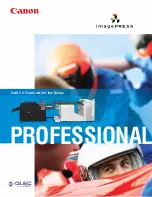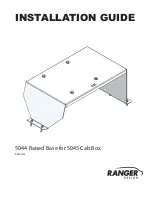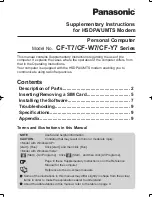
g328512
Figure 26
1.
Washer
3.
Storage compartment
2.
Knob
3.
Close the storage-compartment door.
Testing the Hydraulic
Pressure
1.
Start the engine and move the machine to a
level, open area.
Important:
The area to the rear and around
the machine must be clear.
2.
Ensure that the parking brake switch is on the
E
NGAGED
position.
3.
Set the engine speed to idle.
4.
Run the engine to warm the coolant to 70 to
75°C (160 to 170 °F).
5.
Sitting in the seat with the park brake engaged,
gradually press the reverse traction pedal.
Important:
If the reverse pedal is pressed
gradually and gently, the park brake should
keep the machine from moving backward.
6.
Observe the pressure gauge for stable
measurement of the maximum hydraulic
pressure while pressing the reverse pedal.
7.
Record the maximum hydraulic-pressure
measurement here:
.
8.
Compare the maximum hydraulic pressure that
you measured with the normal pressure range in
the Hydraulic-Pressure Table.
Hydraulic-Pressure Table
Model
Normal Pressure Range
31654
300 to 325 bar (4351 to 4713
psi)
31657 and 31659
260 to 280 bar (3771 to 4061
psi)
Important:
If the hydraulic pressure
measurements are lower than or higher than
the normal pressure range, contact Toro
customer care.
9.
Shut off the engine, remove the key, and wait
for all moving parts to stop before leaving the
operator’s position.
Finishing the Hydraulic
Test
Model 31654
Installing the Brake-Pressure
Transducer
Machines with the Optional Road Light Kit
1.
Disconnect the test equipment from the
quick-connect fitting (
).
g344293
g344346
Figure 27
2.
Remove the quick-connect fitting from the
adapter fitting (
10


































